Nothing is quite as sweet as the nostalgic memories we have from childhood. I have recently been reading a book from the popular children’s series, Fushigi-na Dagashiya: Zenitendō (不思議な駄菓子屋:銭天堂, ふしぎな だがしや:ぜにてんどう) that has unlocked one of those core memories for me.
Fushigi(-na) (不思議 (な), ふしぎ (な)) means “mysterious/incredible”. While 駄菓子 (だがしや, dagashiya) breaks down into 駄 (だ, da) meaning “insignificant,” 菓子 (かし・がし, kashi or gashi) meaning “candy/snack” and 屋 (や, ya) meaning “store.” Zenitendō (ぜにてんどう) is the name of the shop.
This mysterious Japanese candy shop reminds me of when I was little and would run down the block with a couple of coins in my pocket to buy my favorite treats from the small, local candy store. Despite the inexpensive cost of the candy sold there, nothing was insignificant about them.
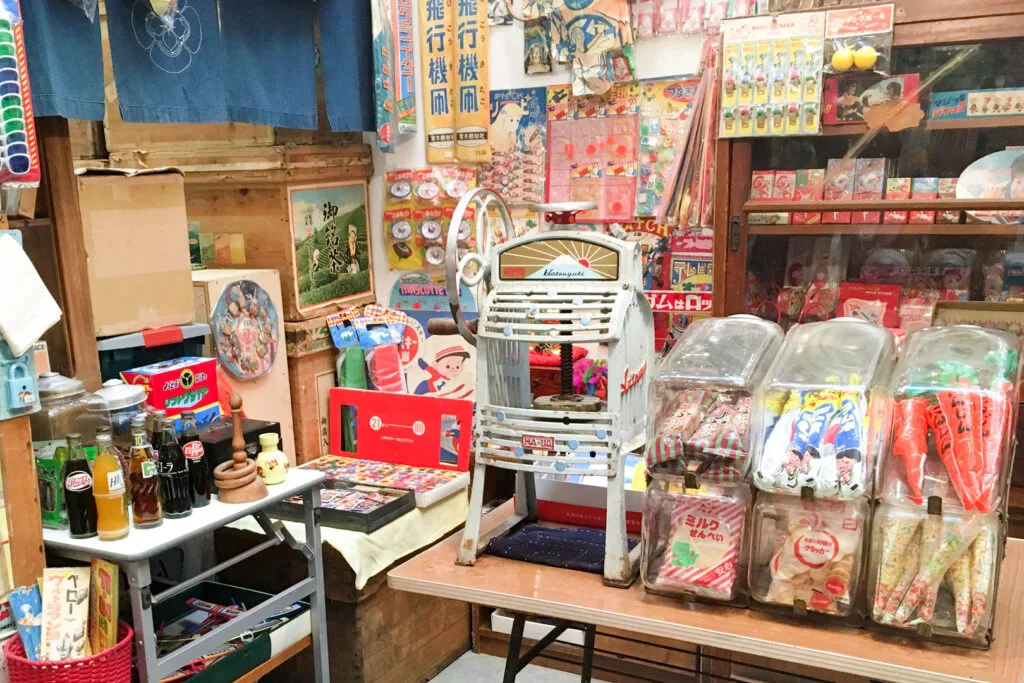
These mom-and-pop shops, along with tofu shops, soy sauce shops, chopstick shops, umbrella shops, vegetable stands, and more, remind us of a much simpler and innocent time, and the communities that grew from them. While most of these shops have been merged with larger stores or have lost that Shōwa era* feel, the candy itself has lasted the test of time. (*The Shōwa era lasted from 1926-1989 and is often used to nostalgically describe items, places and customs from that period of Japan’s history.)
Although Japan is now bursting at the shelves with all kinds of fun candy, let’s look back and taste that Japanese candy sweetness from the past.
Table of Contents
Ramune
Ramune, the Japanese phonetic spelling of the word lemonade, is a classic lemon soda-flavored fizzy candy akin to Smarties in the US (Rockets in Canada or Fruit Tingles in Australia). Morinaga Ramune (森永ラムネ, もりながらむね), a well-known version of these candies, has been around since 1973 and comes in a darling miniature bottle, a replica of the original 1884 Ramune drink.

These candies will melt in your mouth and make you feel like you are drinking sweet lemonade during the hot Japanese summer. While Morinaga may be one of the most well-known ramune, there is a brand that has been around longer.
Kuppy Ramune (クッピーラムネ) has frequented stores since 1963 and, amazingly, still only sells its original flavor. If it ain’t broke, don’t fix it! Countless brands with many flavors and characters are lining the shelves these days, so you can surely find one that fits your liking.
Soft Chewy Candy
I’m not going to lie: Botan Rice Candy (ボンタンアメ, botan ame) freaked me out the first time I ate it because I didn’t quite understand what was happening. You see, these candies are wrapped in rice paper, which, when dry, looks like plastic.
Being a clueless foreigner, I thought I had to unwrap them when I ate them. Try for yourself, and you will soon see that it flakes off and doesn’t work… so how do you eat them?! When dry, the rice paper is clear and plastic-y, but stick it in your mouth, and it just melts down, giving away to a soft, chewy, citrus-flavored candy. Produced in 1924, these candies were meant to mimic the Western caramel candies that were popular then.
However, returning to the Morinaga brand is best if you really want that caramel flavor. Morinaga Milk Caramels (森永ミルクキャラメル、もりながミルクキャラメル) have been around since 1913. Not quite as chewy and soft as your typical Western caramel, these candies will give your mouth a workout while filling it with that creamy, rich butterscotch taste.
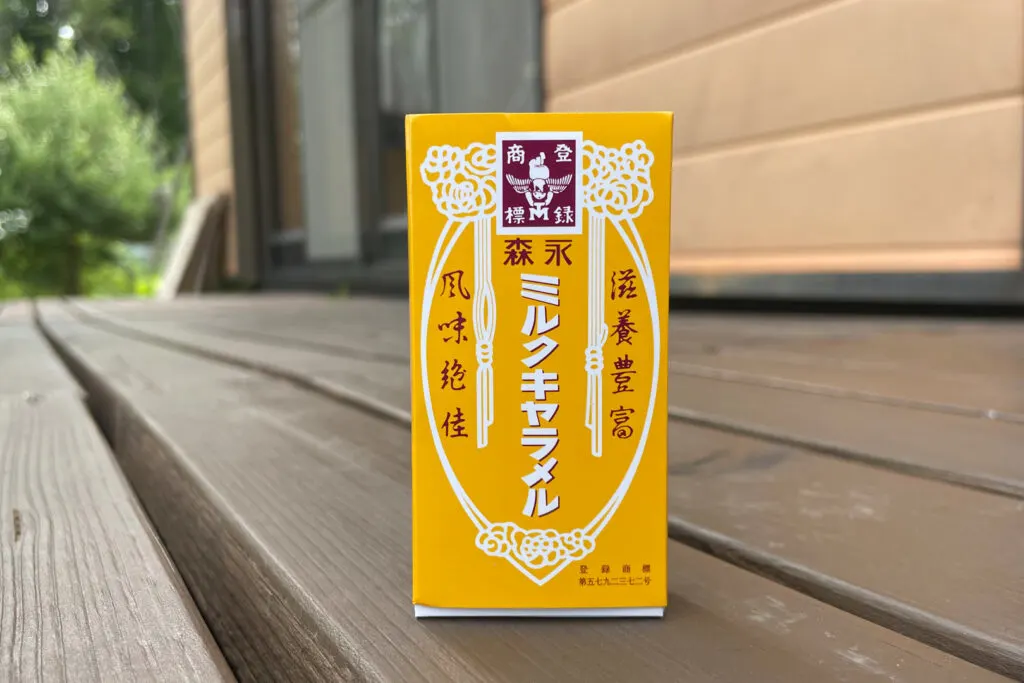
I can’t discuss Morinaga and soft/chewy candy without mentioning Hi-Chew (ハイチュウ). These are probably the first Japanese candies I got hooked on when I came to Japan. They were my staple souvenir gifts until they appeared in American stores in 2008, and the need to lug them home was unnecessary.
Their history is fascinating, too. According to the Hi-Chew website, in 1956, Morinaga had already been producing the caramels but wanted to create something that could mimic chewing gum without the need to take it out of your mouth – a bad habit in Japan. From there, they combined the chewy caramel texture with some flavoring, and a product called Chewlets was born. However, the war caused a lot of hardships, and the candy disappeared until they were re-released in 1975 as Hi-Chew.
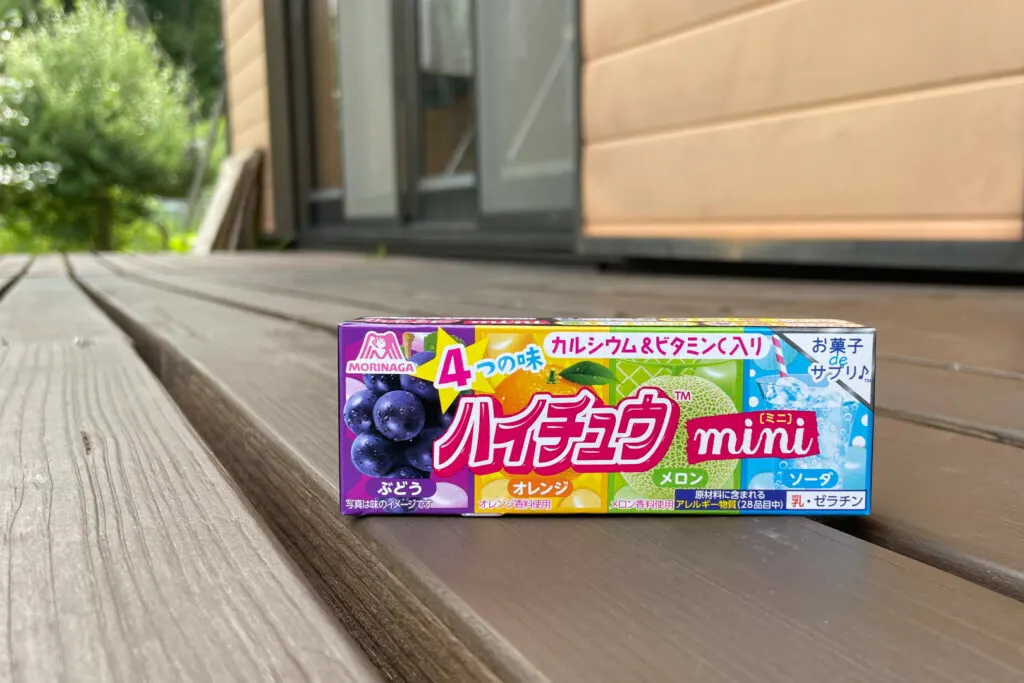
I consider these a softer, chewier version of Starburst. Japan has always been good with flavors, and more often than not, you can find new Hi-Chew flavors in different regions of Japan or in different seasons of the year.
Hard Japanese Candy
For over 70 years, Fujiya (不二家, ふじや) has been famous for its soft and chewy milky candies, Milky (ミルキー). However, in recent years, they have come out with a hard version, Kacchi Kochi Milky Fukuro (カッチコチミルキー袋, かっちこちミルキーふくろ).
With a bit of a robotic twist on the art of its original, unforgettable mascot, Peco-chan, who has been drawing in fans for decades, the company created this new hard candy in 2021 to make its well-known flavor last longer. The company uses naturally rich milk from Hokkaido to make its deliciously creamy milk-flavored sweets.
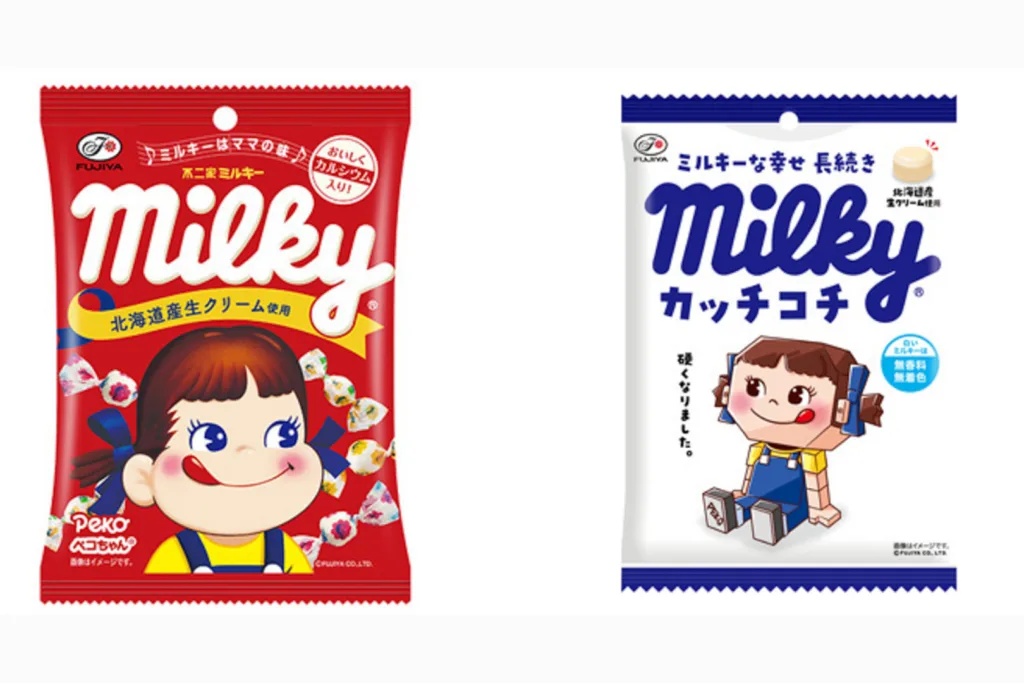
Sakuma Drops (さくまドロップ) are another famous and long-lasting (pun intended) hard candy in Japan (Sakuma is a Japanese family name that most commonly includes a kanji that means “to take or remain for a long time”). These little drops remind me of my grandpa’s house when I would go there and eat the hard candy drops in a jar on his table. How long had they been there? Who knows, but they were good!
Fruit-flavored hard candy with a burst of fruit juice in the middle, these little sweets have been around since 1908 (with a brief pause in production during World War II) but are still sold today in little green steel tins. Sakuma has continued making other hard candy flavors, including a collaboration with Komeda, a large coffee shop chain in Japan.

Japanese Chocolate
Last but certainly not least in the world of Japanese candy is chocolate! Yet again, the Morinaga company has taken hold of a spot in the chocolate category. Created in 1965, Morinaga Chocoballs (森永チョコボール, もりながチョコボール) have been a favorite of children and adults alike.
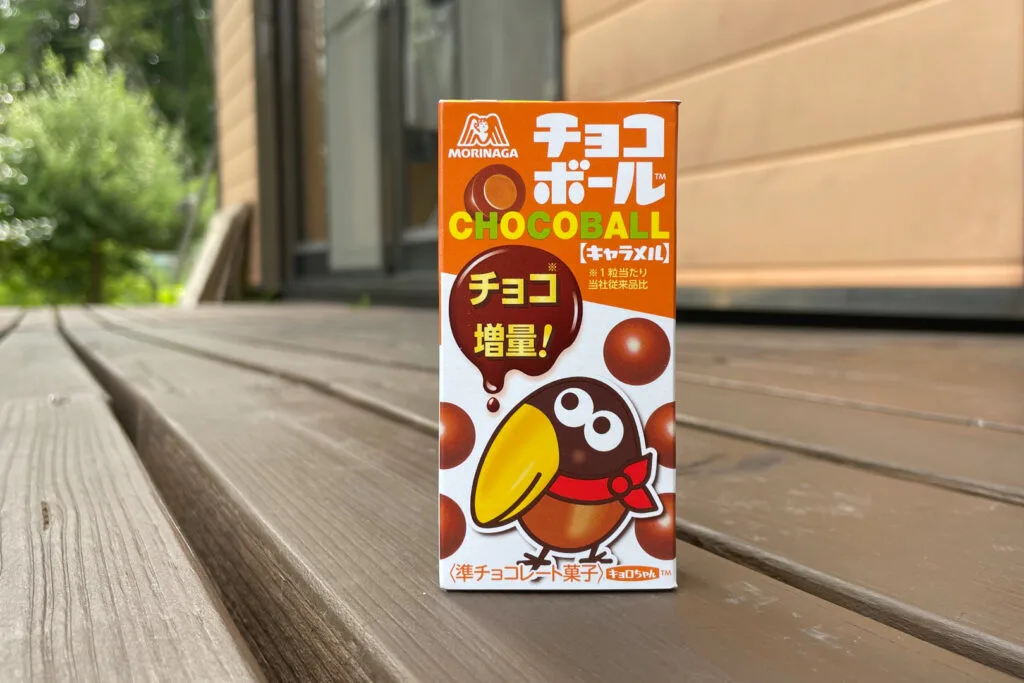
New flavors have popped up throughout the years, such as banana, sweet corn, and their current popping soda flavor. Many of these flavors are temporary or hard to get your hands on, but their steadfast peanut, chocolate, and caramel balls are still readily available in stores around Japan.
Many attest that the popularity of these balls is due to the mascot, a bashful and cute parrot named Kyoro-chan (キョロちゃん). However, Kyoro-chan didn’t arrive until 1967; the first character on the packaging was the squirrel from Space Boy Soran, an animated series from the 60s. Once the show ended, Kyoro-chan was born and became the beloved mascot it still is today.
A discussion about Japanese chocolate would only be complete by mentioning Meiji Chocolate. They have over 125 products, so it would be impossible to discuss them all. Still, looking into the past, Apollo Chocolate (アポロチョコレート), a small cone-shaped chocolate bite, immediately comes to mind.
Born in 1970 and leading the way for such products as Kinoko no Yama (きのこの山、きのこのやま), a mushroom-shaped chocolate bite in 1975, and Takenoko no Sato (たけのこの里、たけのこのさと), a baby bamboo-shaped chocolate bite in 1979, these three products are a staple in any candy aisle, even to this day.
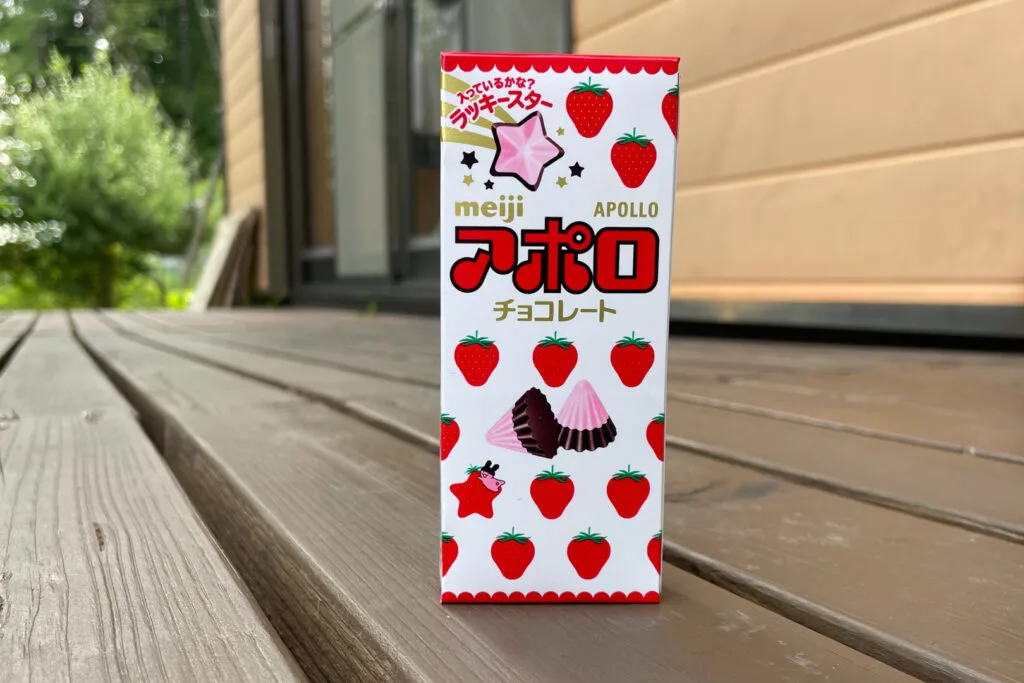
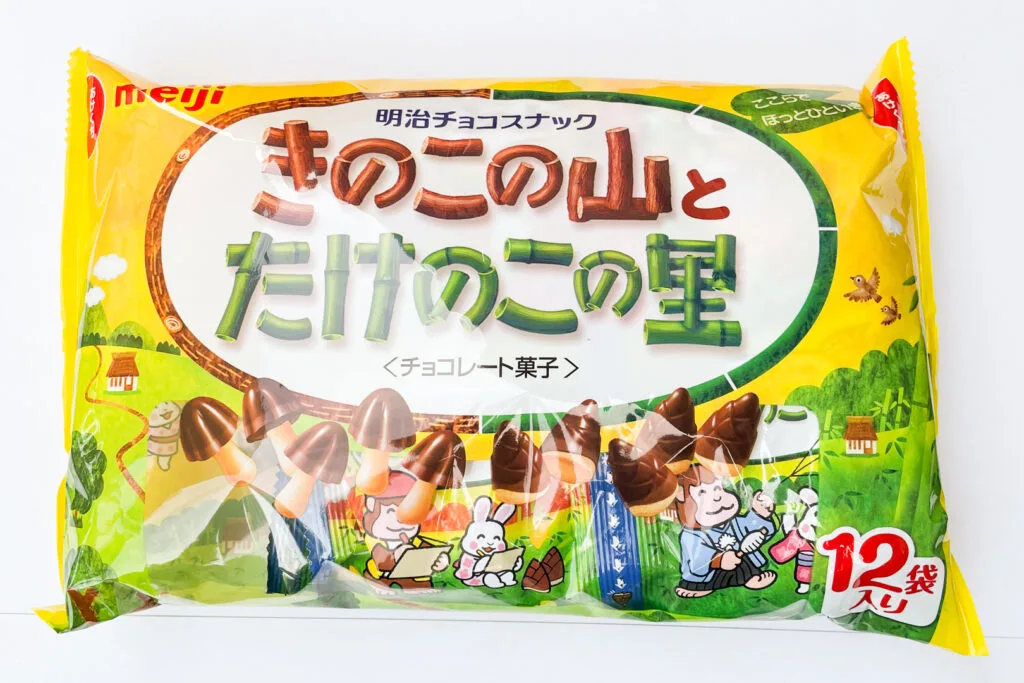
New variations of each are also available, but stick with the original if you want a simple, crunchy chocolate snack.
Read more about these and other Japanese supermarket snacks here.
Dagashiya: A Japanese Candy Paradise
When I tell you that we have just scratched the surface of what candy is found in Japan, I’m not lying. In fact, we haven’t even gotten out of the Showa era! There is much more to explore in these Dagashiya (traditional Japanese candy stores), let alone modern-day supermarkets or convenience stores. Other items that can be found in a candy shop are gummies, salty snacks such as Umaibō, Yatta Men and Big Katsu, and toys! Just thinking about it makes me feel like a kid in a candy shop!
I definitely have a sweet tooth, and if you, too, “only have an eye for sweet things” (甘いものには目がない、あまいものにはめがない, Amai Mono niwa Me ga Nai), then I definitely recommend stopping by one of the few remaining authentic Dagashiya.
Walking into Japanese candy shop, Gifuya (ぎふ屋、ぎふや) in Tokyo’s Nakano Ward is like stepping into the past. Not only is it fun for resident adults to reminisce and local kids to enjoy being kids, but it also allows others to experience the past through touch, taste, and sound! I highly recommend it. Just remember to bring some coins! If you can’t visit Tokyo, take a little tour of the shop here.
Featured image /via Photo AC.
Devon Furuta grew up in Colorado, a place that boasts more than 300 sunny days a year. It’s no wonder she now finds herself in the sunniest place in Japan, Yamanashi.
With that inherited sunny disposition, she works to brighten the days of those around her through teaching, writing, and translation. You’ll also often find her messing around with musical instruments, reading Japanese novels, or pruning the many trees in her garden.
